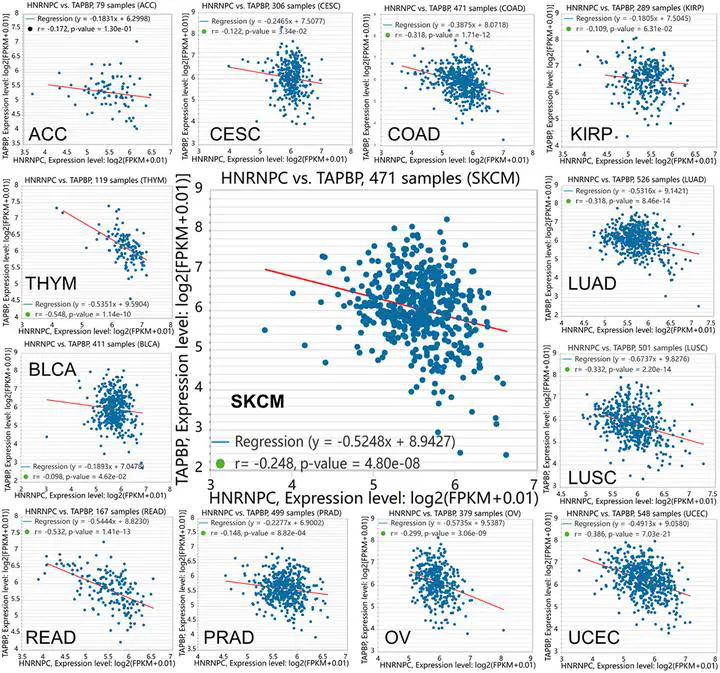Identification of RNA-binding protein hnRNP C targeting the 3′UTR of the TAP-associated glycoprotein tapasin in melanoma

Melanoma cells exploit hnRNP C to bind a repressive site in tapasin (TAPBP) 3′UTR, lowering HLA‑I antigen presentation. Genetic/biochemical disruption of this interaction restores tapasin and boosts HLA‑I surface levels—implicating hnRNP C as a biomarker and target for T‑cell–based immunotherapy.
Abstract (concise, paraphrased)
The study identifies hnRNP C as an RNA‑binding protein that recognizes a silencer motif within the TAPBP (tapasin) 3′UTR in melanoma. By binding this site, hnRNP C decreases tapasin expression and limits HLA class I antigen processing and presentation. Across cell models and patient‑derived materials, loss or inhibition of hnRNP C increases TAPBP mRNA/protein and elevates HLA‑I at the cell surface. These findings position hnRNP C as a regulator of tumor immune visibility and a potential therapeutic/diagnostic handle.
Key takeaways
- Mechanism: hnRNP C engages a 3′UTR silencer in TAPBP, dampening antigen processing and HLA‑I display.
- Evidence: RNA‑protein assays, reporter constructs, perturbation genetics, and analyses of melanoma samples converge on the model.
- Impact: Relieving this repression could enhance T‑cell recognition, offering a route to improve immunotherapy responsiveness.
Suggested citation
Wang Y, Lazaridou M‑F, Kordaß T, et al. Identification of RNA‑binding protein hnRNP C targeting the 3′UTR of the TAP‑associated glycoprotein tapasin in melanoma. OncoImmunology. 2024;13(1):2370928. doi:10.1080/2162402X.2024.2370928.